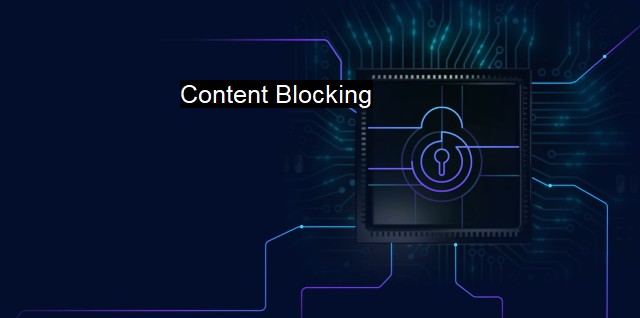What is Content Blocking?
Exploring the Essential Role of Content Blocking and Antivirus Protection in Cybersecurity Strategy
Content blocking, in the context of cybersecurity and antivirus software, is widely known as a mechanism established to prevent unauthorized or harmful digital data from infiltrating a user's device or network. This protection features shields users against security threats including viruses, malware, ransomware, and phishing attacks, targeting both home and business environments. With cyber threats fast evolving, the ability to stem off these harmful elements becomes a crucial concern, hence why content blocking plays an integral role in building powerful cybersecurity infrastructures.From a technological standpoint, content blocking works via a filtering system that screens and assesses data entering a device or network. Though the name implies only dealing with content, this highly-sophisticated system evaluates all comprising parts such as file type, nature of the content, sender or source address, and various other characteristics. Particularly, such assessments are performed based on a predetermined set of rules and guidelines that dictate what is considered high risk or not. Consequently, content deemed harmful or dangerous can be strategically blocked or quarantined.
Content blocking can occur at various levels of a user's cyber infrastructure. For instance, it can be configured on internet browsers to safeguard users from accessing malicious websites. It could also be implemented at the email server level to filter out potential phishing attacks or on the network to prevent unauthorized or harmful traffic from accessing your devices.
Antimalware and antivirus software equipped with content blocking capabilities provide an additional layer of security, directly targeting harmful file downloads. On running a scan, the antivirus software will thoroughly check files for hazardous content based on updated threat databases. These installations are designed to stop risky downloads even before they commence, consequently eliminating the potential for threats to bypass other security measures in place.
Content blocking as a cybersecurity intervention has proved vital in dampening the potency of Adware - an undesirable software that automatically generates unwanted advertisements which could carry harmful malware. Cybersecurity solutions nowadays encompass ad blocking functions, engineered to primarily contend with the stealth and aggression of adware attacks.
Content blocking also incorporates wider configurations. Content can be shielded or blocked in accordance with users' preferences. For instance, parents can automate web content censorship for children’s digital devices, reinforcing protection against mature or explicit content. Enterprises can regulate access to some websites to augment workforce productivity.
Issues of privacy may arise with content blocking as the process essentially implies that content gets vetted, potentially violating users' autonomy to view and access data online. Striking a balance between stringent content blocking strategies and respecting end users' rights as internet citizens is critical.
Despite these concerns, the importance of content blocking in cyber hygiene is magnified due to the ubiquity of threats in the digital world. The number of online security breaches has seen an alarming rise, and individuals and corporations have become regular targets, witnessing user data violations, identity theft, monetary loss, and damage to their reputation.
Content blocking is a dynamic and invaluable feature of cybersecurity protocols—an assertive tool that actively combats cyber threats. It allows us to maximize our freedom and functionalities online, outweighing the dangers that sieve through digital channels. Being vigilant about content also calls for regular updates on the latest cybersecurity threats and staying prepared with the right blocking mechanisms. Thus, content blocking can inarguably be attested to as a leading charge against the multidimensional terrors of the cyber world.

Content Blocking FAQs
What is content blocking?
Content blocking is a security feature that blocks access to certain websites or web pages. It prevents the users from accessing malicious content or websites that may contain viruses or malware.How does content blocking work?
Content blocking works by filtering out unwanted or dangerous websites based on predefined criteria. This can be done using a firewall or antivirus software that checks each request made by the user against a list of known threats. If the site or content is deemed dangerous or irrelevant, it will be blocked.What are the benefits of content blocking?
Content blocking has many benefits, including increased security and protection against malware and viruses. It also helps prevent users from accessing inappropriate or distracting content, which can improve productivity and focus. Additionally, content blocking can prevent phishing attacks, which are a common method used by hackers to steal personal information.Can content blocking be disabled?
Yes, content blocking can be disabled or customized based on specific needs. Many antivirus or firewall software allows for custom configurations, such as whitelisting or blacklisting websites. However, it is recommended to keep content blocking enabled as it provides an extra layer of protection against cyber threats.| | A | | | B | | | C | | | D | | | E | | | F | | | G | | | H | | | I | | | J | | | K | | | L | | | M | |
| | N | | | O | | | P | | | Q | | | R | | | S | | | T | | | U | | | V | | | W | | | X | | | Y | | | Z | |
| | 1 | | | 2 | | | 3 | | | 4 | | | 7 | | | 8 | | |||||||